
Effective Weight Loss
This Topic Covers:
This
summary will focus on dietary supplements that have been researched through
clinical trials and their results (what
works and what doesn’t); Understanding weight gain; Factors that affect
your weight; Weight loss products; Lifestyle changes to assist in weight loss,
and consumer protection resources.
Introduction

Retrieved From -
www.americanobesity.org
A statistic frequently used about obesity treatment
is that 95 percent of people who lose weight gain it all back. That
statistic, based on a small study from 1959, is no longer valid. Much has
changed in the way of obesity treatment since then. Thousands of people have
succeeded in losing weight and keeping it off -- an encouraging fact for
many that are discouraged by outdated information.
There are several
different types of effective treatment options to manage weight including:
dietary therapy, physical activity, behavior therapy, drug therapy, combined
therapy and surgery.
Scope of Research:
Whole diet therapy has become an accepted practice for some health
conditions. However, the popularity of unproven diets, especially for the
treatment of obesity, has risen to a new level as the prevalence of obesity
and metabolic syndrome among Americans has increased and traditional
exercise and diet "prescriptions" have failed.
Popular diets today include the Atkins, Zone, and
Ornish diets, Sugar Busters, and others. The range of macronutrient
distributions of these popular diets is very wide. The proliferation of diet
books is phenomenal. Recently, food producers and restaurants have been
targeting their marketing messages to reflect commercially successful
low-carbohydrate diets.
Public need for information about dietary
supplements, functional foods, and selected strict dietary regimens has
driven research on the effectiveness and safety of these interventions and
the dissemination of research findings.
Weight-loss aids are neither foods nor drugs;
rather, they are classed as dietary supplements. Congress created the
category of dietary supplements under the Dietary Supplement Health and
Education Act of 1994, in response to public pressure to loosen the FDA's
tight control over a variety of products. As a result, individual nutrients,
herbs, and "phytomedicinals" (plants supposed to have medicinal value) can
be sold without being tested for effectiveness or safety, so long as they do
not make direct health or therapeutic claims.
Within these limits, manufacturers cannot say that
their weight-loss aids will cure obesity or make you lose weight, but they
can make indirect claims — and this has led to a wide array of unfounded
assertions on labels and in advertisements .
top
Alarming Statistics
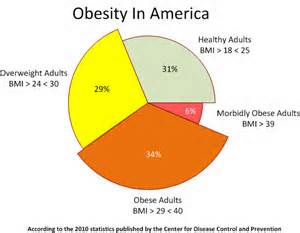
www.who
- World Health Organization
Trends:
It has been estimated that the direct costs of obesity accounted for
6.8% (or US$ 70 billion) of total health care costs, and physical inactivity
for a further US$24 billion, in the United States in 1995. Although direct
costs in other industrialized countries are slightly lower, they still
consume a sizeable proportion of national health budgets
(1). Indirect costs, which
are far greater than direct costs, include workdays lost, physician visits,
disability pensions and premature mortality. Intangible costs such as
impaired quality of life are also enormous.
Because the risks of diabetes, cardiovascular disease and hypertension rise
continuously with increasing weight, there is much overlap between the
prevention of obesity and the prevention of a variety of chronic diseases,
especially type 2 diabetes. Population education strategies will need a
solid base of policy and environment-based changes to be effective in
eventually reversing these trends.
Content Provided from New York
Times by
JANE E. BRODY,
published: April 24, 2007:
More than
$1.3 billion a year is spent on dietary supplements for weight loss, most of
which have had little or no scientifically acceptable testing for
effectiveness and safety, especially when used for months. More than 20
percent of women and nearly 10 percent of men have used nonprescription
weight-loss supplements, the Centers for Disease Control and Prevention
says.
“Over-the-counter dietary supplements to treat obesity appeal to many
patients who desire a magic bullet for weight loss,” Dr. Robert B. Saper and
colleagues at the Harvard Medical School wrote in the journal American Family
Physician in 2004.
healthyamericans.org -
Copyright © Trust for America's Health
The obesity epidemic is one of the country's most
serious health problems. Adult obesity rates have doubled since 1980, from
15 to 30 percent, while childhood obesity rates have more than tripled.
Rising obesity rates have significant health consequences, contributing to
increased rates of more than 30 serious diseases. These conditions create a
major strain on the health care system. More than one-quarter of health care
costs are now related to obesity.
For the past five years, TFAH has issued an annual
report F as in Fat: How Obesity Policies Are Failing in America to track
obesity trends and policies. We conclude that the country is failing to
address the obesity crisis with the urgency it deserves. TFAH recommends
that a National Strategy to Combat Obesity be created with roles for
individuals, families, communities, schools, employers, businesses,
insurers, and government.
www.fda.gov
FDA has identified an emerging trend where over-the-counter products,
frequently represented as dietary supplements, contain hidden active
ingredients that could be harmful. Consumers may unknowingly take products
laced with varying quantities of approved prescription drug ingredients,
controlled substances, and untested and unstudied pharmaceutically active
ingredients. These deceptive products can harm you! Hidden ingredients are
increasingly becoming a problem in products promoted for weight loss.
...FDA has also alerted consumers to hundreds of
products with these often deceptively labeled and harmful ingredients,
including more than 80 products marketed for sexual enhancement, more than
70 products marketed for weight loss, and more than 80 products marketed for
bodybuilding.
www.consumer.ftc.gov
People have suffered strokes, acute liver
injury, kidney failure, and pulmonary embolisms (artery blockage in the
lung); some people have died. Tainted supplements often are sold with false
and misleading claims like "100% natural" and "safe."
top
Defining
Overweight and Obesity
www.cdc.gov
Overweight and obesity are both labels for ranges of
weight that are greater than what is generally considered healthy for a
given height. The terms also identify ranges of weight that have been shown
to increase the likelihood of certain diseases and other health problems.
For adults, overweight and
obesity ranges are determined by using weight and height to calculate a
number called the “body mass index” (BMI). BMI is used because, for most
people, it correlates with their amount of body fat.
See the following table for an example.
Height
|
|
Weight
Range
|
BMI
|
Considered
|
|
5’
9”
|
124
lbs or less
|
Below
18.5
|
Underweight
|
|
125
lbs to 168 lbs
|
18.5
to 24.9
|
Healthy
weight
|
|
169
lbs to 202 lbs
|
25.0
to 29.9
|
Overweight
|
|
203
lbs or more
|
30
or higher
|
Obese
|
It is important to remember
that although BMI correlates with the amount of body fat, BMI does not
directly measure body fat. As a result, some people, such as athletes, may
have a BMI that identifies them as overweight even though they do not have
excess body fat. For more information about BMI, visit
Body Mass Index.
Other methods of estimating body fat and
body fat distribution include measurements of skinfold thickness and waist
circumference, calculation of waist-to-hip circumference ratios, and
techniques such as ultrasound, computed tomography, and magnetic resonance
imaging (MRI).
How to
Calculate BMI
www.cdc.gov
BMI is
calculated the same way for both adults and children. The calculation is
based on the following formulas:
|
Measurement
Units
|
Formula and
Calculation
|
|
Kilograms and Meters
or
Centimeters
|
Formula: weight (kg) / [height (m)]2
With the metric system, the formula for BMI is weight in
kilograms divided by height in meters squared. Since height is
commonly measured in centimeters, divide height in centimeters
by 100 to obtain height in meters.
Example: Weight = 68 kg, Height = 165 cm
(1.65 m)
Calculation: 68 ÷ (1.65)2 = 24.98
|
|
Pounds and
inches
|
Formula: weight (lb) / [height (in)]2 x 703
Calculate BMI by dividing weight in pounds (lbs) by height in
inches (in) squared and multiplying by a conversion factor of
703.
Example: Weight = 150 lbs, Height = 5’5”
(65")
Calculation: [150 ÷ (65)2] x 703 = 24.96
|
top
Understanding
Weight Gain
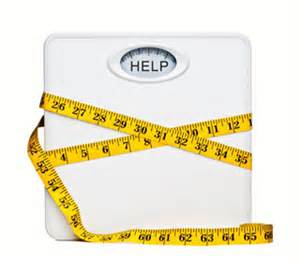
www.healthscience.org
© National Health Association
Reducing weight and fat
seems to constantly focus on the narrow minded debate of “calories in” vs.
“calories out,” so that the burden of responsibility for weight gain is
routinely focused solely on the dieting and exercise habits of individuals.
As a result, a panorama of quick- fix fad diets and exercise programs are
held out as the answer to the prayers of the overweight, even though the
millions of people who religiously adopt these approaches typically meet
with failure and, even worse, reactive long-term weight gains…
… An extensive body of clinical practice and research data strongly suggest
that it is imperative to consider the synergistic interaction of several key
factors to solve the problem of obesity. These
factors include the quantity, quality, and type of food we eat, the exercise
and activity we maintain, how we handle daily and chronic stress, the
emotional context of our food use, the sleep we get, the drugs and
stimulants we overuse, and the impact of industrial and environmental
pollution and toxicity.
…Perhaps the most common
metabolic disturbance associated with weight gain is
insulin resistance. Insulin is a hormone that carries sugar into
cells by attaching to special proteins (receptors) on the surface of brain
and muscle cells. These receptors act like doors in the membrane, or outer
envelope, of cells. When insulin attaches to these doors, it acts like a key
opening these doors so that sugar can enter the cell and be converted into
energy.
However, weight gain,
high fat diets, excessive consumption of refined carbohydrates, yo-yo
dieting, decreased physical activity, and sleep deficiency slam these
insulin doors shut making them resistant to the attachment and action of
insulin…
It is important to note
that the potential activity of this fat making enzyme is significantly
increased during extreme dieting as a part of the starvation response so
that this enzyme is poised and ready to
promote dramatic, rapid weight and fat
gain whenever fat and sugar intake is increased following periods of dieting
and calorie restriction .
Since insulin is not
attaching well in insulin resistance, the body begins to believe that there
is an insulin deficiency, and overproduces insulin. This excessive insulin
increases our craving for fat and sugar, reinforcing the cycle of sugar
imbalance and weight gain.
Nutrition Therapy: Because of the
disturbance of insulin function, eating in a way
that produces excessive fat, or raises blood sugar quickly, can promote
reactive weight gain. So the ideal eating plan is a plant-based diet.
This eating plan is low in calorie density and fat, high in complex
carbohydrates, high in plant-based proteins, high in fiber and water
content, high in vitamins, minerals, phytonutrients and antioxidants, and
low in glycemic index. Glycemic index is just a measure of the impact
any food has on blood sugar. High glycemic foods — e.g., all refined sugar
and bakery products, and white flour products (white bread, white rice,
refined pastas etc.) — which raise blood sugar quickly to a high degree
should be avoided. These foods tend to promote reactive weight gain.
The ideal plant-based
approach contains low glycemic foods including all fresh vegetables, a
variety of fresh fruits, (especially all berries, grapefruit, apples, kiwi,
peaches, plums, cherries, and nectarines), complex starches like lentils,
beans and whole grains that include brown rice, millet, barley, and quinoa.
Overcooking and over processing fruits and vegetables tend to raise their
glycemic index. Therefore, fruits and veggies, should be eaten as close to
the raw state as possible, or lightly steamed or sautéed, not embalmed.
The diet should
contain moderate amounts of nuts, soy proteins, and avocados, and a very
modest use of both 100 percent whole grain, man-made starches like bread and
pasta, and man-made bottled vegetables oils. Fresh juicy fruit should be
used as a substitute for refined sugary desserts whenever possible. As a
strategy to eliminate an addiction to refined sugar over the next 30 days,
every time you want a dessert or something sweet, have a piece or two of
juicy fruit. In addition, have some fat, a few almonds or a sliver of
avocado and a few celery sticks, with the fruit. This will lower the
glycemic impact, slow down sugar absorption, maintain better blood sugar
stability, and decrease hunger and craving. In addition, avoid all sugar
additives, artificial sweeteners, and sugar substitutes.
Unfortunately, high
protein animal-based diets also have dangerous levels of fat, typically 40
percent or more of total calories. Therefore, staying on this type of diet
for more than 4-6 months can result in a significant increase in vascular
blockage and decreased blood flow to the heart and brain, increasing the
risk of stroke, and heart disease. In addition, high protein animal-based
consumption significantly increases chronic constipation, migraine
headaches, potential cardiac arrhythmias from mineral losses associated with
the dehydration effect of high protein diets, and significant reactive
weight gain over time. Animal and dairy products are too high in
cholesterol, saturated fat, acidity and arachadonic acid (omega-6), that
provoke systemic inflammation, weaken the immune system, and promote
exaggerated hormonal changes which increase stress and reactive weight gain.
While some fish may contain helpful omega-3 fatty acids (DHA), they can also
contain high cholesterol, potential mercury contamination, and
organochlorines, like PCB in farm raised salmon, which can disturb hormone
and thyroid function to promote weight gain.
Remember, in
all the years of weight loss research, the most important parameter of any
eating plan to support long-term weight loss is calorie density.
This is the amount of calories the diet contains per weight of food. A
plant- based diet has the greatest amount of nutrients for the smallest
amount of calories. A pound of salad greens is only 100 calories a pound!
Eating a diet primarily composed of fruits and vegetables provides a diet
that has the lowest calorie density of any diet on planet earth, and is the
most effective for long-term weight loss. Furthermore, since this diet also
contains the most water and fiber, it will also fill you up, provide a
better sense of satiety, and eliminate craving and hunger.
Exercise
Therapy: Increase physical activity
and aerobic exercise. Walking, 45-60 minutes, 4-5 times a week will lower
body fat and body set point, and make you more calorie efficient so that you
can burn, rather than store, calories more successfully throughout your day.
The combination of aerobic exercise and weight training, 30 minutes 3 times
a week, can improve insulin function, help resolve the problem of insulin
resistance and lower levels of insulin release, thereby reducing food and
sugar craving. Exercise can also enhance the production of serotonin, the
neurotransmitter that promotes sleep, to improve the extent and quality of
sleep, and reduce sleep deficiency related weight gain.
Stress management:
We are all capable of creating an arousal stress response whenever we
perceive the events and interactions of our lives to be traumatic,
threatening or stressful. During the typical stress response, also called a
fight or flight response, short term increases in muscle tension, blood
pressure, heart rate and breathing are created to provide the drive and
energy to fight or run away from the perceived challenge. These actions are
promoted by the hormone cortisol, and other chemical transmitters released
by the glands of stress, the adrenal glands, and also to some degree by the
hormones and activity of the thyroid gland.
Ongoing, unresolved
stress can increase cortisol release to raise blood sugar levels and
increase the production and circulation of fat. In addition, visceral,
omental fat in the abdominal region has a greater number of receptors for
cortisol than fat in other areas of the body,5 so that when excessive
cortisol is released in response to chronic stress, it can preferentially
target fat cells in your stomach area and promote the production and buildup
of belly fat. The localization and increase in abdominal body fat has been
linked to an increased risk of heart attack, angina, stroke, and non-drug
dependent diabetes.6 Stress, alcohol, smoking, and caffeine in all of its’
forms all increase cortisol levels, and can contribute to risky, long-term
fat and weight gain.7
The stress response is an energy demanding
process that has evolved as an essential survival tool. However, as the
relentless pressures and demands of our hectic, modern lives drive us into a
state of chronic stress, we can deplete energy reserves and move into a
state of exhaustion, also exhausting the glands of metabolism, adrenals and
thyroid, and interfere with our ability to lose weight. Unfortunately,
instead of resolving the exhaustion with supportive stress management
techniques and sleep, we often opt for stimulants like caffeine, nicotine,
refined sugar and other stimulant-based drugs, supplements, and drinks,
which only magnify the problem of exhaustion.
Whenever
the body is stimulated chemically, stimulation is only the initial effect.
As the stimulants are metabolized, you will eventually crash to the same
extent that you have been stimulated. Whatever goes up has to come down with
equal and opposite force! Therefore, consistent use of caffeine and other
stimulants promotes long-term fatigue and depression, suppression of the
thyroid and adrenal glands, and reactive weight gain. Since caffeine in
sodas, chocolate, coffee, some dietary weight loss supplements, and some
over the counter analgesic drugs (Excedrin) can directly stimulate excessive
cortisol release, it can directly contribute to adrenal exhaustion and
increased body fat and weight gain over time.
This
strongly suggests that
stress management techniques should be an
essential part of any weight loss program.
Yoga, tai-chi, chi-gung, breathing and relaxation techniques, meditation,
etc., are all approaches that can provide you with an opportunity to step
back from the chatter of your life, embrace some quiet moments of precious
present, replenish your energy reserves, and support the weight loss
process.
In
addition, our emotional responses to the conditions of life are intimately
tied to our perception of the events and information we encounter. With the
exception of major catastrophic trauma, negative stress and emotional upset
are typically not in the event, but rather in the perception of the event,
so that perception feeds emotion and together shape the strategies,
behaviors, and solutions we create to solve the problems at hand. For
example,
our emotional relationship with food can also
provoke abnormal eating behavior,
especially since so many of us have been entrained from childhood to use
food for comfort and distraction whenever life gets difficult and
overwhelming…
So even
as adults, we often attempt to satisfy our ongoing needs for pleasure,
physical well-being, emotional nourishment, and spiritual comfort with
devastating calorie-dense comfort foods (high fat and refined sugar), that
give us the illusion of well-being, while only increasing obesity,
dissatisfaction and even self-loathing.
So take
some time to incorporate lifestyle changes that improve body and brain
balance to support your brain reward system. Take a closer more conscious
look at yourself and
evaluate what you are using food for. Try to
understand the context of your food use as well as the content of what you
are eating.
Sleep:
The work of sleep medicine suggests that
sleep deficiency is one of the leading
causes of weight gain. Adults need an
average of 7-8 hours of sleep a night, while children need 9-10 hours. Sleep
deficiency can be defined as less than 4-6 hours a night. Sleep deficiency
promotes abnormal food craving, blood sugar instability, stress, and
potential weight gain.
Sleep deficiency is perceived by the body as a major
stressful event. As a result, cortisol levels are increased, thereby
increasing the circulation and stores of body and belly fat. Sleep
deficiency also worsens the problem of insulin resistance, provoking the
overproduction of insulin, and increasing the craving for fat and refined
sugar. In addition, sleep deficiency increases the amount of ghrelin, a
natural appetite stimulant, and decreases the amount of lepten, a hormone
produced by fat cells that signals the brain that we’ve had enough to eat.
So sleep deficiency can interfere with satiety signals and promote
overeating. And since insulin resistance is increased by sleep deficiency,
the craving for fats and refined sugar will also be increased at the same
time, promoting a greater tendency to overeat these foods and increase
weight gain.
See Sleep Therapy Section
Pollution and Toxicity:
Research in England, Canada, and the United States suggests that the
most overweight people are found in cities and areas with the greatest
amount of industrial and environmental pollution.9 In the U.S., the 10
fattest states are in the industrial South of our nation.10 They are
connected either to the Mississippi River, the most polluted river in the
U.S., or in the case of West Virginia, Texas, Alabama, Louisiana, and
Georgia are home to some of the top 20 mercury polluting power plants in the
nation. While these areas may foster lifestyles that support poor
eating habits and sedentary behavior, it appears that the increased levels
of industrial pollutants may be contributing to the epidemic of obesity
independent of other factors.
Mines,
refineries, and factories regularly release toxins into the environment.
Some of these pollutants are capable of disrupting key biological hormones,
affecting the fertility of mammals and invoking changes that may be involved
in reactive weight gain. Organochlorines — e.g., the pesticides DDT, its’
breakdown product DDE, and PCB (found in farm-raised salmon) — can decrease
the levels of thyroid hormones, slowing down the metabolic rate of the body,
and interfering with weight loss. These pollutants act directly on the
sympathetic nervous system to interfere with weight-regulating hormones, and
the receptors on fat cells, that may be involved in reactive weight gain.11
Some industrial pollutants like
bisphenal-A, an
estrogen mimic used to make clear hard reusable plastic products, and flame
retardants, can signal dormant pre-adipocytes (baby fat cells) to grow into
mature fat cells.12 As fat cells grow, it is harder to keep weight down.
This increase in weight urges the detoxifying systems of the body to slow
down and simply store more and more toxins in the growing mass of available
fat. As a result, the body becomes increasingly fatter and more toxic. In
some cases, these chemicals may elicit inflammatory responses and toxic
effects on brain, liver, and kidneys.13 This may eventually overwhelm the
body’s detoxification pathways. Under this pressure, the body tries to
dilute these toxins by making new fat cells in which to store them, since
these chemicals are usually soluble in fat, thereby reinforcing an ongoing
cycle of toxicity, fat, and weight gain.
Lifestyle Changes:
Obesity is a major health problem with devastating consequences of
disability, disease, and death. However, it is a problem that can be solved
if we are willing as individuals to address a constellation of causative
lifestyle factors. There is no simple quick-fix solution. Yet, while the
solution requires disciplined lifestyle choices by the individual, it also
requires that countries and governments shoulder some of the responsibility,
and take action to address the toxic by-products of the industrialization
and urbanization of modern society. It is imperative that we create more
emotional and spiritual balance in our lives, and realize that we must stop
digging our graves with our teeth. At the same time, businesses and
corporations must also be more accountable for their actions, and legally
pressured if necessary, to realize that they can’t keep poisoning people and
the environment for profit.
top
Why Diet Pop and Colas Make You Fat and Sick
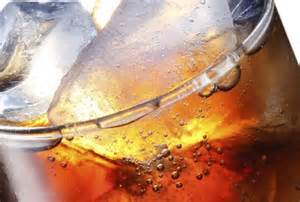
Reference Source -
www.laleva.org
Effective weight loss starts with diet changes and exercise, one of the
first changes is to stop drinking all diet pop all colas, all carbonated
beverages - including diet pop, which is the worst.
Get the Aspartame out of
your diet! Why, ASPARTAME (NutraSweet, Equal, Spoonful, etc.) the sweetener
in diet pop is very acidic, with a pH of 1.5 to 2.5 - that is 100,000 times
more acid that your body wants to be. Aspartame has a pH of 1.5! All life
dies at a pH of 4.5. Because of this your body creates fat cells to store
the extra acid or in this case Aspartame. This is why people who drink diet
pop just get fatter.
Your kidneys are the
prime pH balancing organs in your body. The body wants to have a general pH
of about 7. So when you drink pure water with pH of about 7 or a little
higher - you are balancing the pH in your kidneys, and balancing the general
pH in the body. When the pH is right the body can release and dispose of
stored acids, which are filling the fat cells. This why some clients have
had such drastic weight reductions in such a short amount of time, just
drink water.
Why is pH so important?
If your pH is correct you will have a much less chances of contracting a
chronic condition, such as cancer, arthritis, or even the common cold. There
is a direct correlation between pH and your immune system. The Immune system
works at its most optimal level, when the body pH is 7.0 - or slightly
alkaline.
So when you drink just
one diet pop - you drive your pH down, shutting down the immune system, and
setting yourself up for a disease to take hold. Drink just one diet pop or
cola, you will then have to drink 32 glasses of water with a pH of 7 or more
to balance your pH.
Scientists have found
that healthy people have body fluids that are slightly alkaline, 7.1 to 7.5
pH. Scientists and doctors have also found that over 150 degenerative
diseases are linked to acidity, including cancer, diabetes, arthritis, heart
disease, gall and kidney stones, and many more. All diseases thrive in an
acidic, oxygen poor environment.
Keep in mind that a drop
in every point on the pH scale is 10x more acidic than the previous
number--i.e. from 7 to 6 is 10x, from 7 to 5 is 100x etc. From 7 to 2 is
100,000x more acidic, colas are in the approximate 2.5 pH range. Almost no
soda (pop) is higher than 3.0. Diet sodas are the worst as they have the
highest acid content. Actually diet sodas cause you to gain weight because
they alter the blood chemistry, making changes in your metabolism, leading
to a slower metabolic rate. The best liquid to drink is water.
Most degenerative
diseases we call "Old-Age Diseases" like memory loss, osteoporosis,
arthritis, diabetes, hypertension, and many more are actually life style
diseases caused by acidosis, the lack of supplements, what acids we ingest,
what nutrients we don't ingest, or toxins we don't properly eliminate.
Extract from: The WORLD
ENVIRONMENTAL CONFERENCE and the MULTIPLE SCLEROSIS FOUNDATION.
…In the case of systemic lupus, we are finding it
has become almost as rampant as multiple sclerosis, especially with Diet
Coke and Diet Pepsi drinkers. Also, with methanol toxicity, the victims
usually drink three to four 12 oz. cans of them per day, some even more.
ASPARTAME... It is NOT A DIET PRODUCT!!! The
Congressional record said, "It makes you crave carbohydrates and will make
you FAT". Dr. Roberts stated that when he got patients off ASPARTAME, their
average weight loss was 19 pounds per person. The formaldehyde stores in the
fat cells, particularly in the hips and thighs…
Link to Aspartame - Read Precautions
So what is an alternative?
Stevia is an herb that has been used as a sweetener in
South America for hundreds of years. It is calorie - free, and the powdered
concentrate is 300 times sweeter than sugar. Is widely used all over the
world. In Japan, for example, it claims 41% of the sweetener market,
including sugar, and was used in Japanese Diet Coke until the company
replaced it with aspartame to "standardize" worldwide. There have not been
any reports of toxicity with stevia, which is consumed by millions of people
daily.
top
Treatment
Strategies 
www.cdc.gov
To lose weight, you must use up more calories than you take in. Since one
pound equals 3,500 calories, you need to reduce your caloric intake by
500—1000 calories per day to lose about 1 to 2 pounds per week.1
Once you've achieved a
healthy weight, by relying on healthful eating and physical activity most
days of the week (about 60—90 minutes, moderate intensity), you are more
likely to be successful at keeping the weight off over the long term.
www.nutrition.gov
What You Need to
Know Before Getting Started - Weight loss can be achieved either by
eating fewer calories or by burning more calories with physical activity,
preferably both. A healthy weight loss program consists of:
-
A reasonable, realistic weight loss goal
-
A reduced calorie, nutritionally-balanced eating
plan
-
Regular physical
activity
-
A behavior change plan to help you stay on track
with your goals
Keep in Mind
-
Calories count
-
Portions count
-
Nutrition counts
-
Even a small amount of weight loss can lead to big
health benefits
-
Strive to develop good habits to last a lifetime
-
Discuss weight loss with your doctor before getting
started
top
What Do I Ask My Doctor?

healthfinder.gov
Before you start
a diet, talk to your doctor or nurse about a healthy weight-loss plan that’s
right for you. Screening and counseling for obesity are covered under the
Affordable Care Act. Depending on your insurance plan, you may be able to
get these services at no cost to you. Talk to your insurance provider.
It helps to have questions for the doctor or nurse written down before your
appointment. Print out this list of questions, and take it with you the next
time you visit the doctor. You may want to ask a family member or close
friend to go with you to take notes.
-
How does my weight affect my health?
-
Do I have a health problem that is causing me to be
overweight?
-
How will losing weight help me?
-
What is a healthy weight for me?
-
How much weight do I need to lose?
-
How long should it take me to lose weight?
-
What are healthy ways to lose weight and keep it
off?
-
How do I change my eating habits?
-
What kinds of physical activity do I need to do?
-
Could a weight-loss program help me?
top
Step-by-Step Guidelines to Getting
Started
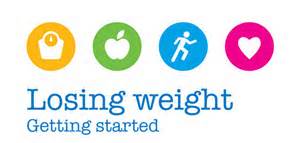
www.cdc.gov
Step
1: Make a commitment.
Making the decision to lose weight, change your lifestyle, and become
healthier is a big step to take. Start simply by making a commitment to
yourself. Many people find it helpful to sign a written contract committing
to the process. This contract may include things like the amount of weight
you want to lose, the date you'd like to lose the weight by, the dietary
changes you'll make to establish healthy eating habits, and a plan for
getting regular physical activity.
Step 2: Take
stock of where you are.
Consider talking
to your health care provider. He or she can evaluate your height, weight,
and explore other weight-related risk factors you may have. Ask for a
follow-up appointment to monitor changes in your weight or any related
health conditions.
Keep a "food diary" for a few days, in which you
write down everything you eat. By doing this, you become more aware of what
you are eating and when you are eating. This awareness can help you avoid
mindless eating.
Next, examine your current lifestyle. Identify
things that might pose challenges to your weight loss efforts. For example,
does your work or travel schedule make it difficult to get enough physical
activity? Do you find yourself eating sugary foods because that's what you
buy for your kids? Do your coworkers frequently bring high-calorie items,
such as doughnuts, to the workplace to share with everyone? Think through
things you can do to help overcome these challenges.
Finally, think about aspects of your lifestyle
that can help you lose weight. For example, is there an area near your
workplace where you and some coworkers can take a walk at lunchtime? Is
there a place in your community, such as a YMCA, with exercise facilities
for you and child care for your kids?
Step 3: Set
realistic goals.
Set some short-term goals and reward your efforts along the way. If your
long-term goal is to lose 40 pounds and to control your high blood pressure,
some short-term eating and physical activity goals might be to start eating
breakfast, taking a 15 minute walk in the evenings, or having a salad or
vegetable with supper.
Focus on two or three goals at a time. Great,
effective goals are —
For example, "Exercise More" is not a specific
goal. But if you say, "I will walk 15 minutes, 3 days a week for the first
week," you are setting a specific and realistic goal for the first week.
Remember, small changes every day can lead to big results in the long
run. Also remember that realistic goals are achievable goals. By achieving
your short-term goals day-by-day, you'll feel good about your progress and
be motivated to continue. Setting unrealistic goals, such as losing 20
pounds in 2 weeks, can leave you feeling defeated and frustrated.
Being realistic also means expecting occasional
setbacks. Setbacks happen when you get away from your plan for whatever
reason – maybe the holidays, longer work hours, or another life change. When
setbacks happen, get back on track as quickly as possible. Also take some
time to think about what you would do differently if a similar situation
happens, to prevent setbacks.
Step 4: Identify resources for information and
support.
Joining a weight loss group or visiting a health
care professional such as a registered dietitian, can help. Find family
members or friends who will support your weight loss efforts. You might have
coworkers or neighbors with similar goals, and together you can share
healthful recipes and plan group exercise.
Step 5: Continually "check in" with yourself to
monitor your progress.
Revisit the goals you set for yourself (in Step
3) and evaluate your progress regularly. If you set a goal to walk each
morning but are having trouble fitting it in before work, see if you can
shift your work hours or if you can get your walk in at lunchtime or after
work. Evaluate which parts of your plan are working well and which ones need
tweaking. Then rewrite your goals and plan accordingly.
If you are
consistently achieving a particular goal, add a new goal to help you
continue on your
pathway
to success.
Reward yourself for your
successes! Recognize when you're meeting your goals and be proud of
your progress. Use non-food rewards, such as a bouquet of freshly picked
flowers, a sports outing with friends, or a relaxing bath. Rewards help keep
you motivated on the path to better health.
top
Setting Goals For Weight Loss
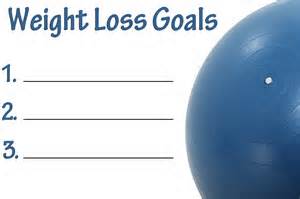
www.cdc.gov
Improving Your Eating Habits
-
Making sudden, radical changes to eating habits such as eating nothing
but cabbage soup, can lead to short term weight loss. However, such radical
changes are neither healthy nor a good idea, and won't be successful in the
long run. Permanently improving your eating habits requires a thoughtful
approach in which you Reflect, Replace, and Reinforce
-
REFLECT on
all of your specific eating habits, both bad and good; and, your common
triggers for unhealthy eating.
-
REPLACE your
unhealthy eating habits with healthier ones.
-
REINFORCE your
new, healthier eating habits.
Create a list of your eating habits.
Keeping a food diary for a few
days, in which you write down everything you eat and the time of day you ate
it, will help you uncover your habits… Use this
diary (PDF-36k)
to help.
Highlight the habits
on your list that may be leading you to
overeat. Common eating habits that can lead to weight gain are:
·
Eating too fast
·
Always cleaning
your plate
·
Eating when not
hungry
·
Eating while
standing up (may lead to eating mindlessly or too quickly)
·
Always eating
dessert
·
Skipping meals (or
maybe just breakfast)
Look at the unhealthy eating
habits you've highlighted. Be sure you've identified all the triggers that
cause you to engage in those habits. Identify a few you'd like to work on
improving first. Don't forget to pat yourself on the back for the things
you're doing right.
Create a list of "cues" by
reviewing your food diary to become more aware of when and where you're
"triggered" to eat for reasons other than hunger. Note how you are typically
feeling at those times. Often an environmental "cue", or a particular
emotional state, is what encourages eating for non-hunger reasons. Common
triggers for eating when not hungry are:
·
Opening up the
cabinet and seeing your favorite snack food.
·
Sitting at home
watching television.
·
Before or after a
stressful meeting or situation at work.
·
Coming home after
work and having no idea what's for dinner.
·
Having someone
offer you a dish they made "just for you!"
·
Walking past a
candy dish on the counter.
·
Sitting in the
break room beside the vending machine.
·
Seeing a plate of
doughnuts at the morning staff meeting.
·
Swinging through
your favorite drive-through every morning.
·
Feeling bored or
tired and thinking food might offer a pick-me-up.
Circle the "cues" on your list that you face on a daily or
weekly basis. Going
home for the Thanksgiving holiday may be a trigger for you to overeat, and
eventually, you want to have a plan for as many eating cues as you can. But
for now, focus on the ones you face more often.
Ask yourself these
questions for each "cue" you've circled:
-
Is there
anything I can do to avoid the cue or situation? This
option works best for cues that don't involve others. For example, could
you choose a different route to work to avoid stopping at a fast food
restaurant on the way? Is there another place in the break room where
you can sit so you're not next to the vending machine?
-
For things I can't avoid, can I do something differently
that would be healthier? Obviously,
you can't avoid all situations that trigger your unhealthy eating
habits, like staff meetings at work. In these situations, evaluate your
options. Could you suggest or bring healthier snacks or beverages? Could
you offer to take notes to distract your attention? Could you sit
farther away from the food so it won't be as easy to grab something?
Could you plan ahead and eat a healthy snack before the meeting?
Replace unhealthy habits with new, healthy ones.
For example, in reflecting upon your eating habits, you may realize that you
eat too fast when you eat alone. So, make a commitment to share a lunch each
week with a colleague, or have a neighbor over for dinner one night a week.
Other strategies might include putting your fork down between bites or
minimizing other distractions (i.e. watching the news during dinner) that
might keep you from paying attention to how quickly — and how much — you're
eating.
Here are more ideas to help you replace unhealthy
habits:
-
Eat more slowly. If you eat too quickly, you may "clean your plate"
instead of paying attention to whether your hunger is satisfied.
-
Eat only when you're truly hungry instead of when you are tired,
anxious, or feeling an emotion besides hunger. If you find yourself
eating when you are experiencing an emotion besides hunger, such as
boredom or anxiety, try to find a non-eating activity to do instead. You
may find a quick walk or phone call with a friend helps you feel better.
-
Plan meals ahead of time to ensure that you eat a healthy well-balanced
meal.
Reinforce
your new, healthy habits and be patient with yourself.
Habits take time to develop. It doesn't happen overnight. When you do find
yourself engaging in an unhealthy habit, stop as quickly as possible and ask
yourself: Why do I do this? When did I start doing this? What changes do I
need to make? Be careful not to berate yourself or think that one mistake
"blows" a whole day's worth of healthy habits. You can do it! It just takes
one day at a time!
Do I have to give up my favorite comfort food?
No! Healthy eating is all about balance. You can enjoy
your favorite foods even if they are high in calories, fat or added sugars.
The key is eating them only once in a while and balance them out with
healthier foods and more physical activity.
Some
general tips for comfort foods:
top
Keeping It Off

www.helpguide.org
‘©Helpguide.org. All rights reserved. Helpguide.org
is an ad-free non-profit resource for supporting better mental health and
lifestyle choices for adults and children.’
Follow a healthy and
realistic eating pattern. You have embarked on a healthier lifestyle, now
the challenge is maintaining the positive eating habits you've developed
along the way. In studies of people who have lost weight and kept it off for
at least a year, most continued to eat a diet lower in calories as compared
to their pre-weight loss diet.2 For more suggestions regarding a healthful
diet, visit
Healthy
Eating for a Healthy Weight.
Keep your eating patterns consistent. Follow
a healthy eating pattern regardless of changes in your routine. Plan ahead
for weekends, vacations, and special occasions. By making a plan, it is more
likely you'll have healthy foods on hand for when your routine changes.
Eat breakfast every day. Eating
breakfast is a common trait among people who have lost weight and kept it
off. Eating a healthful breakfast may help you avoid getting "over-hungry"
and then overeating later in the day.
Be Active
Get daily
physical activity.
People who have lost weight and kept it off typically engage in 60—90
minutes of moderate intensity physical activity most days of the week while
not exceeding calorie needs. This doesn't necessarily mean 60—90 minutes at
one time. It might mean 20—30 minutes of physical activity three times a
day. For example, a brisk walk in the morning, at lunch time, and in the
evening. Some people may need to talk to their healthcare provider before
participating in this level of physical activity. (Link to Exercise Therapy)
Stay on Course
Monitor your diet and
activity. Keeping
a food and physical activity journal can help you track your progress and
spot trends. For example, you might notice that your weight creeps up during
periods when you have a lot of business travel or when you have to work
overtime. Recognizing this tendency can be a signal to try different
behaviors, such as packing your own healthful food for the plane and making
time to use your hotel's exercise facility when you are traveling. Or if
working overtime, maybe you can use your breaks for quick walks around the
building.
Monitor your weight.
Check your weight regularly. When managing your weight loss, it's a good
idea to keep track of your weight so you can plan accordingly and adjust
your diet and exercise plan as necessary. If you have gained a few pounds,
get back on track quickly.
The Caloric Balance Equation
When it comes to maintaining a healthy weight for a
lifetime, the bottom line is – calories count! Weight management is all
about balance—balancing the number of calories you consume with the number
of calories your body uses or "burns off."
A calorie is defined as a unit of energy supplied by
food. A calorie is a calorie regardless of its source. Whether you're eating
carbohydrates, fats, sugars, or proteins, all of them contain calories.
Caloric balance is like a scale. To remain in balance
and maintain your body weight, the calories consumed (from foods) must be
balanced by the calories used (in normal body functions, daily activities,
and exercise) .
top
Long-term Successful Weight
Loss Models 
Reference Source -
www.americanobesity.org
According to the Centers for Disease Control and
Prevention (CDC), 36 percent of adult Americans attempt to lose weight, and
56 percent attempt to maintain their current weight or keep from gaining
weight.
How do people successfully lose weight and keep it off?
Healthy low-calorie and low-fat diets as well as high levels of physical
activity are the foundation for success, according to the researchers who
maintain the
National
Weight Control Registry (NWCR), a database of people who
have self-reported successful weight loss and maintenance of weight loss.
Although the criteria for entry into the NWCR is the
achievement and maintenance of weight loss of 30 pounds or more for at least
one year, the average NWCR participant has lost about 60 pounds and kept it
off for about five years.
When participants were asked questions about how
they maintained their weight loss, the NWCR researchers found that:
-
92 percent limited their intake of certain foods
(one example: eating at fast food restaurants less than once a week).
-
They consumed an average of 1400 calories per day,
of which 24 percent of calories was from fat, 19 percent protein, and 56
percent carbohydrates.
-
They ate five times a day, on average.
-
They burned an average of 2,800 calories a week
through exercise (an equivalent of about 400 calories day).
-
75 percent weighed themselves regularly - at least
once a week.
-
About one-third described weight maintenance as
hard, one-third as moderately easy, and one-third as easy.
-
42 percent reported that maintaining their weight
loss was less difficult than initially losing the weight.
Reference Source -
www.nwcr.ws -
The National Weight Control Registry
The National Weight Control Registry (NWCR),
established in 1994 by Rena Wing,
Ph.D. from Brown Medical School, and James
O. Hill, Ph.D. from the University of Colorado, is the largest
prospective investigation of long-term successful weight loss maintenance.
Given the prevailing belief
that few individuals succeed at long-term weight loss, the NWCR was
developed to identify and investigate the characteristics of individuals who
have succeeded at long-term weight loss. The NWCR is tracking over 10,000
individuals who have lost significant amounts of weight and kept it off for
long periods of time.
Learn from the Statistics
-
We have also started to
learn about how the weight loss was accomplished:
-
45% of registry participants lost the weight on
their own and the other 55% lost weight with the help of some type of
program.
-
98% of Registry participants report that they
modified their food intake in some way to lose weight.
-
94% increased their physical activity, with the
most frequently reported form of activity being walking.
There is variety in how NWCR members keep the weight
off. Most report continuing to maintain a low calorie, low fat diet and
doing high levels of activity.
-
78% eat breakfast every day.
-
75% weigh themselves at least once a week.
-
62% watch less than 10 hours of TV per week.
-
90% exercise, on average, about 1 hour per day.
NWCR's
Research Findings
The National Weight Control Registry’s Research
Findings: To date, we have published articles describing the eating and
exercise habits of successful weight losers, the behavioral strategies they
use to maintain their weight, and the effect of successful weight loss
maintenance on other areas of their lives. Link to
NWCR's
Research Findings
top
Ranking Weight
Loss Programs

Reference Source -
www.pcrm.org - Physicians Committee
for Responsible Medicine
PCRM contacted ten weight management and lifestyle
improvement programs to determine the availability of cholesterol-free,
healthful menus or foods. We graded programs according to whether they
promote low-fat, plant-based foods, which research has shown to be the most
effective approach to obesity and major diseases.
Four programs received an excellent rating. Most of
these programs mirror the effective nutritional approach of the leading
researchers who run them. They do not focus on portion size and, in fact,
lay little if any blame on their clients’ appetites. Instead, they use foods
that are high in fiber and complex carbohydrates while avoiding animal
products, oils, and overly refined products.
The commercial strip-mall centers are a very distant
second, retaining substandard diet guidelines and packaged foods that are
usually too similar to those that caused clients’ weight problems in the
first place.
The Jenny Craig program is in a class of its own at
the bottom of the list. Jenny Craig clients have to buy its line of packaged
goods that contain animal products and too much fat.
Excellent
Four programs achieved an outstanding rating for
using low-fat, unrefined, plant-based foods for achieving and maintaining
weight loss and good health.
-
The McDougall Program at St. Helena Health Center
-
NEWSTART Lifestyle Program at the Weimar Institute
-
Wildwood Lifestyle Center
-
Preventive Medicine Research Institute (PMRI)
Not-So-Excellent
The next five programs retain an obsolete approach
that focuses on skimpy meal portions rather than on making serious changes
in the content of animal products and fat. They offer few low-fat,
vegetarian choices despite evidence that such foods are the most effective
for weight control.
Poor
Reference Source -
www.webmd.com
Jan. 9, 2013 -- The best diet
plan for
overall health may not cost a thing.
A new ranking of diets by U.S.
News & World Report gives top
honors for best overall diet to the DASH (Dietary Approaches to Stop
Hypertension) diet. Originally developed by the National Heart, Lung, and
Blood Institute to lower blood
pressure, the diet plan is available
free online.
Experts also ranked top
diets in seven other categories, including weight
loss,
diabetes,
heart-healthy,
commercial, easiest to follow, plant-based, and healthy
eating.
Weight Watchers won best
weight loss diet
as well as easiest to follow and best commercial diet.
The DASH diet tied with The Biggest Loser diet
as the best diet plan to prevent and
manage diabetes. The
DASH diet was also named best diet for healthy eating, while the
Mediterranean diet won best plant-based diet.
Ranking the
Best Diets -
The rankings are based on reviews of 29 diets by
a panel of experts in diet
nutrition,
obesity,
food psychology, diabetes, and heart
disease.
The panel rated each diet’s effectiveness in the following
seven categories:
Best Overall
Diets
-
DASH Diet (4.1 stars) --
The blood-pressure-lowering diet beat out other better-known diets for
its nutritional completeness, safety, ability to prevent and control
diabetes, and promote heart
health.
-
TLC Diet (4.0
stars)
--
The National Institutes of Health created the Therapeutic
Lifestyle Changes diet to lower cholesterol levels.
Experts say it’s a well-rounded, healthy diet, but it requires a
“do-it-yourself” approach as opposed to the hand-holding provided by
some commercial diet plans.
-
Mayo Clinic Diet (3.9
stars) -- This diet plan got high marks for its safety and nutrition.
Experts say it is moderately effective for weight loss.
-
Mediterranean Diet (3.9
stars) -- With an emphasis on fruits, vegetables, olive oil, and other
healthy foods, the diet got some of the highest scores for nutrition.
But experts say some Americans might have a problem sticking to a diet
that requires giving up processed foods and sugary drinks.
-
Weight Watchers (3.9
stars) -- Experts said the commercial weight loss diet plan was the
easiest to stick to thanks to a strong emphasis on emotional support.
Best
Weight-Loss Diets
-
Weight Watchers (3.8
stars) -- The diet plan uses a points system to help people lose weight
and keep it off. Weight Watchers beat other diet plans for both
short-term and long-term weight loss in experts’ ratings.
-
The Biggest Loser Diet (3.5 stars) -- The diet based on the television show of the
same name is built around healthy food and regular exercise.
Experts said it required a lot of grunt work
and may be hard to maintain for long-term weight loss.
-
Jenny Craig (3.5 stars) --
Experts rated Jenny Craig highly effective as a weight-loss diet, but a
few questioned whether dieters can expect to keep the weight off after
they are weaned off the diet’s prepackaged, portion-controlled foods.
-
Raw Food Diet (3.5 stars)
-- This diet is dominated by plant-based foods never heated above 115
degrees Fahrenheit. Although the raw food diet delivers both short-term
and long-term weight loss, experts say such a restrictive,
labor-intensive diet isn’t for everyone.
-
Volumetrics (3.4
stars) -- The diet is based on eating foods that are low in calories and
high in volume to help people feel full while losing weight. It got high
marks for nutrition, but the diet requires lengthy meal preparation.
top
Finding a Weight
Loss Program That Works for You

www.consumer.ftc.gov
The Partnership for Healthy Weight Management
encourages providers of weight loss programs to follow voluntary guidelines
for providers of weight loss products or services to give you basic
information about their methods. Here are some questions to ask when
evaluating a weight loss program -
Finding a Weight Loss Program that Works for You
Informing Consumers:
When you start shopping for a weight loss program, ask providers whether
they follow the Voluntary Guidelines for Providers of Weight Loss Products
or Services from the Partnership for Healthy Weight Management. If a program
provider doesn’t know about the Guidelines, suggest they contact the
Partnership at the Federal Trade Commission’s…read
the entire
Voluntary Guidelines Providers Weight Loss Products Or Services
at the Partnership's website.
Choosing a Safe
and Successful Weight-loss Program
Weight Loss for Life
How can I lose weight?
Your Plan for Healthy Eating
Your Plan for Regular Physical Activity
What types of weight-loss programs are available?
Nonclinical Program
Clinical Program
Additional Reading
Other Resources
top
How to
Evaluate Weight Loss Products & Services

www.consumer.ftc.gov
Advertising claims for weight loss products and
services inevitably over-promise. The products and services themselves
almost always under-deliver. Changing your diet and exercising more are the
keys to successful weight loss. Find out how to evaluate weight loss and
fitness claims before you buy products or services that claim to make it
fast or easy to slim down or shape up.
How to
Weigh the Claims in Diet Ads
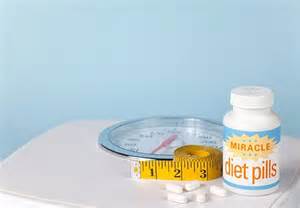
www.consumer.ftc.gov
Weighing the Claims in Diet Ads
-
Whether it’s a pill, patch, or cream, there’s no shortage of ads
promising quick and easy weight loss without diet or exercise. But the
claims just aren’t true, and some of these products could even hurt your
health. The best way to lose weight is to eat fewer calories and get more
exercise. Don’t be hooked by promises, testimonials, or supposed
endorsements from reporters; all you’ll lose is money.
Claims to watch
out for include:
Lose
weight without diet or exercise!
- Getting to a healthy weight takes work. Take a pass on any product that
promises miraculous results without the effort. The only thing you’ll lose
is money.
Lose
weight no matter how much you eat of your favorite foods!
- Beware of any product that claims that you can eat all the high-calorie
food you want and still lose weight. Losing weight requires sensible food
choices. Filling up on healthy vegetables and fruits can make it easier to
say no to fattening sweets and snacks.
Lose weight permanently! Never diet again!
- Even if you’re successful in taking weight off, permanent weight loss
requires permanent lifestyle changes. Don’t trust any product that promises
once-and-for-all results without ongoing maintenance.
Just take a
pill!
-
Doctors, dieticians, and other experts agree that there’s simply no magic
way to lose weight without diet or exercise. Even pills approved by FDA to
block the absorption of fat or help you eat less and feel full are to be
taken with a low-calorie, low-fat diet and regular exercise.
Lose 30 pounds in 30 days!
- Losing weight at the rate of a pound or two a week is the most effective
way to take it off and keep it off. At best, products promising
lightning-fast weight loss are a scam. At worst, they can ruin your health.
Everybody will lose weight!
- Your habits and health concerns are unique. There is no one-size-fits-all
product guaranteed to work for everyone. Team up with your health care
provider to design a nutrition and exercise program suited to your lifestyle
and metabolism.
Lose weight with our
miracle diet patch or cream! - You’ve seen the ads for diet patches
or creams that claim to melt away the pounds. Don’t believe them. There’s
nothing you can wear or apply to your skin that will cause you to lose
weight.
Other tip-offs to a fraud include:
Claims that one product does it all and cures a wide variety of health
problems
- "Proven to treat rheumatism, arthritis, infections, prostate problems,
ulcers, cancer, heart trouble, hardening of the arteries and more."
Suggestions the product can treat or cure
diseases - "Shrinks tumors," "Cures impotency," or "Prevents severe
memory loss."
Words like scientific breakthrough, miraculous
cure, exclusive product, secret ingredient, or ancient remedy - "A
revolutionary innovation formulated by using proven principles of natural
health-based medical science."
Misleading use of scientific-sounding terms
- "Molecule multiplicity," "glucose metabolism," "thermogenesis," or
"insulin receptor sites."
Phony
references to Nobel Prize winning technology or science
- "Nobel Prize Winning Technology," or "Developed by two times Nobel prize
winner."
Undocumented testimonials by patients or doctors claiming miraculous results
- "My husband has Alzheimer's disease. He began eating a teaspoonful of this
product each day. And now, in just 22 days, he mowed the grass, cleaned out
the garage, weeded the flower beds, and we take our morning walk again."
Limited
availability and a need to pay in advance
-"Hurry. This offer will not last. Send us a check now to reserve your
supply."
Promises
of no-risk "money-back guarantees
- "If after 30 days you have not lost at least 4 pounds each week, your
uncashed check will be returned to you."
top
Protect Yourself from
Weight Loss Fraud

www.fda.gov
FDA’s Health Fraud
Scams website pulls together videos on how to avoid fraudulent schemes, and
offers information about products that have been seized, recalled or are the
subject of warnings from the agency.
Video Tips to
Protect You from Weight Loss Scams
Health Fraud Scams (Videos from FDA)
Health Fraud Scams - Weight Loss
Being Fooled by Empty Diet Promises
Don't
Be a Victim (You could lose so much more than weight) - A
message from the FDA warning about the dangers of fraudulent weight loss
products, the deceptive ads used to market them, and tips on how to protect
yourself.
HCG
Dangerous to Dieters - There are no HCG products--sold online or
in stores--that are approved for weight loss. For your own safety, do not
use them. FDA and FTC are warning companies selling these products that they
are breaking the law. For more information, watch this Consumer Update
video.
top
Consumer Precautions
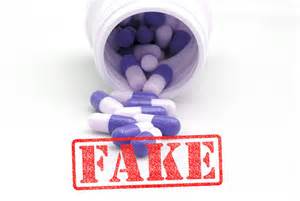
www.fda.gov
It’s everywhere - on TV and radio, on the
Internet, in magazines, and on flyers posted on your car windshield and
telephone polls - ads describing a miraculous way to lose weight quickly. The
truth is that if there really is a miracle cure, 64.5 percent of adult Americans
would not be overweight. But, that is a fact.
Numerous products and programs offering weight loss solutions are
available to consumers, who must be properly educated on how to evaluate which
ones are effective, safe and offer realistic results.
The Federal Trade Commission (FTC) has brought
numerous cases of deceptive advertising over the years against providers of
diet pills, potions, and devices, and against commercial diet clinics.
If you
think that you have taken a product of concern, or feel that you are a
victim of a fraudulent service, file a complaint.
How
to File a Complaint:
File a Consumer
Complaint Form and report fraudulent weight loss product claims
to the FTC. You also can contact
your state Attorney General.
If
you find a website you think is illegally selling human drugs, animal drugs,
medical devices, biological products, foods, dietary supplements or
cosmetics on the Internet, complete a form at the FDA's website,
Reporting
Unlawful Sales of Medical Products on the Internet.
If you have experienced an illness or injury with
a dietary supplement marketed as a weight loss product, or have a general
complaint or concern about food products, take the following steps:
1) Contact MedWatch, the FDA Safety
Information and Adverse Event Reporting Program:
Related Information for Consumers:
-
for dietary supplements, select 2
-
for drug products, select 3
-
for medical devices, select 4
-
for biologics, including human cells, tissues,
and cellular and tissue-based products, select 6
2) The FDA would like to know when a product
causes a problem even if you are unsure the product caused the problem or even
if you do not visit a doctor or clinic. When you report your adverse event,
problem or concern, have the following information ready:
-
The name, address and telephone number of the
person who became ill
-
The name and address of the doctor or hospital providing medical
treatment
-
A description of the problem
-
The name of the product and store where it was bought
3) Report the problem to the manufacturer or
distributor listed on the product's label and to the store where the product was
bought.
For Health Professionals:
If you are a health professional, you can report adverse events related to
patient use of dietary supplements. Your patients' identity is kept
confidential. Make your report to the FDA's MedWatch by calling their hotline at
1-800-FDA-1088 or completing appropriate forms on the FDA Safety Information and Adverse Event
Reporting Program website.
U.S. Postal Service (USPS):
Postal inspectors investigate
crimes, such as fraudulent marketing promotions, that use the U.S. Mail. A crime
is considered mail fraud if it originates in the mail, by telephone or on the
Internet and is carried out in the U.S. Mail. According to the U.S. Postal
Inspection Service (USPIS), the law enforcement branch of the USPS:
In the past, the USPIS has stopped orders
from the manufacturer of a nationally advertised grapefruit pill when the
company broke a consent agreement prohibiting unsubstantiated claims that with
their product, consumers would "lose greater amounts of weight than
scientific evidence showed."
If you think you are a
victim of weight loss fraud by mail, submit a Mail Fraud Complaint Form to the USPIS or
contact your local postal inspection service.
Better Business Bureau (BBB): The BBB is a self-regulated organization
supported by businesses to provide reports to consumers about companies. The BBB
works with law enforcement agencies to stop fraud. Check out a company, file a
complaint, find tips on preventing fraud, and information on dispute resolution
at the BBB
website.
top
Adverse
Products – Safety Issues

www.consumer.ftc.gov
In
the last few years, FDA has discovered hundreds of
dietary supplements
containing drugs or other chemicals, often in
products for weight loss, sexual
enhancement, or bodybuilding.
These extras generally aren't listed on the label — and might even be
sold with false and misleading
claims like “100% natural” and “safe.”
They could cause serious
side effects or interact in dangerous ways with medicines or other
supplements you're taking.
People have suffered
strokes, acute liver injury, kidney failure, and pulmonary embolisms (artery
blockage in the lung); some people have died. Tainted supplements often are
sold with false and misleading claims like "100% natural" and "safe." To
recognize tainted products, look for:
-
products claiming to be
alternatives to FDA-approved drugs or have effects similar to
prescription drugs
-
products claiming to be legal
alternatives to anabolic steroids
-
marketing materials primarily in a
foreign language
-
promises of rapid effects or results
Find more on tainted
products marketed as dietary supplements at
FDA's website.
top
Tainted Weight Loss Products
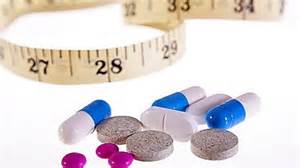
www.fda.gov
FDA has identified an emerging trend where over-the-counter products,
frequently represented as dietary supplements, contain hidden active
ingredients that could be harmful. Consumers may unknowingly take products
laced with varying quantities of approved prescription drug ingredients,
controlled substances, and untested and unstudied pharmaceutically active
ingredients. These deceptive products can harm you! Hidden ingredients are
increasingly becoming a problem in products promoted for weight loss.
|
Remember,
FDA cannot test all products on the market that contain
potentially harmful hidden ingredients. Enforcement actions and
consumer advisories for tainted products only cover a small
fraction of the tainted over-the-counter products on the market.
|
A History of Action
-
Among the substances found in products that are
marketed as dietary supplements and that contain hidden or deceptively
labeled ingredients are:
-
the active ingredients in FDA-approved drugs or their analogs
(closely-related drugs).
-
other compounds, such as novel synthetic steroids, that do not qualify
as dietary ingredients.
Where FDA investigations have discovered tainted products marketed as
dietary supplements, the agency has issued warning letters and conducted
seizures and criminal prosecutions.
FDA has also alerted consumers to hundreds of
products with these often deceptively labeled and harmful ingredients,
including more than 80 products marketed for sexual enhancement, more than
70 products marketed for weight loss, and more than 80 products marketed for
bodybuilding.
top
Dietary
Supplements Consumer Alerts
www.fda.gov
Search for Listings of Tainted Dietary
Supplements and/or Weight Loss Products here -
Drugs
Resources For You Consumers - Buying Using Medicine Safely Medication Health
Fraud
Sign up
here
Get Consumer Updates by E-mail to
receive email notification alerts of dietary supplement recalls. When
you subscribe to this service, you will receive an e-mail message each time
there is an update on the FDA page(s) you select.
top
Credible
Weight Loss
Dietary Supplement Recommendations
Retrieved From -
www.americanobesity.org
Note:
just like any drug natural supplements are "natural drugs" and you should
consult your physician before taken them as part of any weight loss program.
GREEN TEA EXTRACT
Green tea contains compounds called catechins, a class of antioxidants
which have been associated with an increased metabolism and the ability to
stimulate fat burning. In a 2005 study published in the American Journal of
Clinical Nutrition, a group of men who consumed 690 milligrams of green tea
extract per day lost more weight in three months than a control group (an
average of 5.3 pounds versus. 2.9 pounds). Previous studies have shown that
green tea causes weight loss in women, too.
GUARANA
Guarana is a plant native to parts of the Amazon rain
forest. It has black seeds that are rich in caffeine, with approximately
double the caffeine of coffee beans. The caffeine is a stimulant and is
thought to raise energy expenditure, however, it could also stimulate the
central nervous system and heart, and may result in anxiety and rapid heart
rate in larger amounts.
BITTER ORANGE
After ephedra was taken off the market in 2004, bitter
orange (Citrus aurantium) a herb similar to ephedra, started to become more
popular. It contains compounds similar to ephedrine called synephrine and
octopamine. Bitter orange may raise blood pressure, increase heart rate or
cause abnormal heart rhythms.
GARCINIA CAMBOGIA
The Hydroxycitric Acid found in Garcinia Cambogia has
several different effects on the body. The most notable of these effects is
its ability to inhibit the uptake of carbohydrates that are stored in the
body as fat. By prohibiting the fat storage, the carbs are burned as energy
thereby increasing energy levels and decreasing fat levels. HCA also works
to prevent cravings for sugar heavy and carbohydrate heavy foods, balance
the blood sugar levels, and increase the serotonin levels in the brain which
signal to us that we are full faster.
5-HTP
The principle behind 5-HTP for
weight loss is that it seems to have a marked effect on the chemical
Serotonin which is naturally produced in the brain. Serotonin plays an
intricate part in the mechanisms of sleep, mood and hunger. 5-HTP has been
used in studies to help people in the fight against obesity. There is sufficient
evidence to prove that 5-HTP, when used as a dietary supplement, will
work as an effective weight loss aid.
www.doctoroz.com
Safe and reliable weight-loss solutions have never been so easy! Dr. Oz
explores the latest diet trends, fitness regimes and lifestyle changes to
provide you with the safest, easiest and fastest ways to shed any unwanted
pounds.
www.doctoroz.com - Dr. Oz's recommendations and warnings on dietary
supplements for weight loss.
top
Calorie Calculators
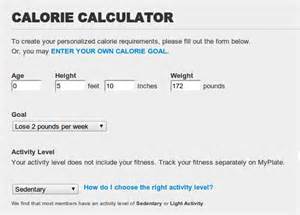
Calorie Calculator - Find out how many calories are in a particular food
or meal. Search for specific foods or browse the database.
CALORIES Burned - calculate how many calories you are burning doing your
favorite activities.
Calories to BURN to Reach Goal Weight - Set a target date and calculate
the number of calories you need to burn to reach your goal weight.
BMI Calculator
- Use the BMI calculator and chart to get your BMI score and determine what
that means for your health.
Body FAT
Calculator - Calculate approximately what percentage of your body weight
is fat.
Meal
and Snack Calculator - If you want to lose, maintain, or gain weight,
this tool will calculate the number of calories that are right for you.
Get
Moving Calculator: Exercise/Calories Burned - Physical activity (no
matter how big or small) burns calories and this calculator estimates the
calorie expenditure.
Diet Assessment Calorie Calculator - If you've lost a significant amount
of weight, increased your exercise or made changes in regard to eating and
exercise, use the Diet Assessment Calorie Calculator to find the appropriate
calorie level based on the changes you've made in your lifestyle.
Calculate Your Daily Calorie Needs - Find the number of calories
you should eat each day to maintain your current weight. If you're
overweight, use the average healthy weight recommended for your height.
top
Dining Out Options

Healthy Dining
Finder
Search for restaurants offering healthy dining choices in your neighborhood
by zip code. Find
many tantalizing and
dietitian-approved
Healthy Dining menu choices that restaurants
nationwide are dishing up to help
you enjoy eating out as part of your healthy lifestyle.
Use calories, fat, saturated fat, and price ranges to find
delicious, nutritious meals that are right for you.
Healthy Weight: Rethink Your Drink
Many
people don't realize just how many calories beverages can contribute to
their daily intake. Calories from drinks can really add up. This document
provides you with options for reducing the number of calories in what you
drink.
top
Where
To Get More Help
www.win.niddk.nih.gov
-
The Weight-control
Information Network provides the general public, health professionals, the
media, and Congress with up-to-date, science-based information on weight
control, obesity, physical activity, and related nutritional issues.
TOPS Tools -
Find useful articles and news on fitness and nutrition, plus tools to help
you plan and track various aspects of your weight management efforts.
www.yourweightmatters.org
- Provides evidence-based information to manage weight and improve health.
www.shapeup.org - Find information
and ideas to achieve a healthy weight for you and your family. If you are a
health professional, you will find resources to assist your clients and
patients with their efforts to attain and maintain a healthy weight.
smallplatemovement.org - Topics cover the science of portion sizes,
mindless eating, and eating behaviors.
www.cswd.org - The Council on Size & Weight Discrimination
Provides information on eating disorders, “sizism,” the
non-dieting movement, and size discrimination.
top

|

|
